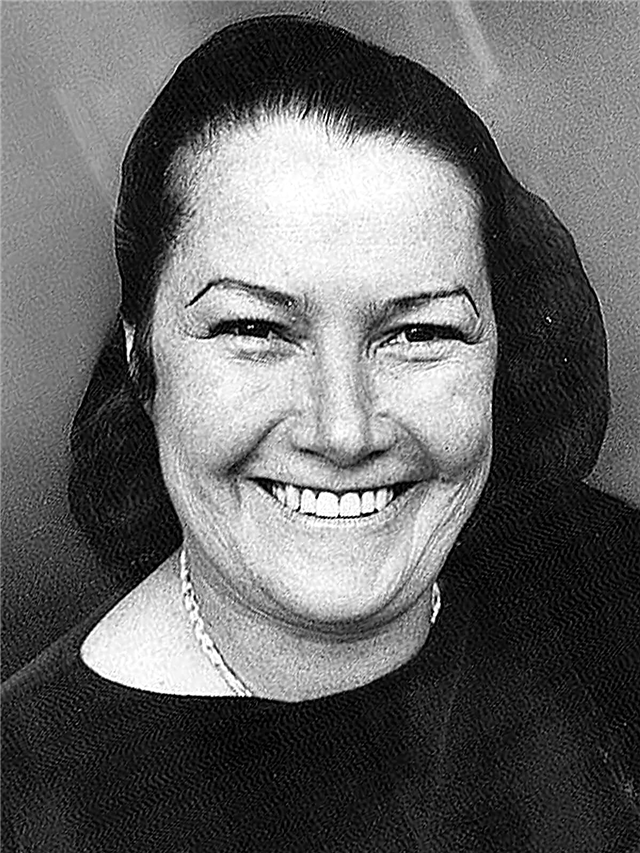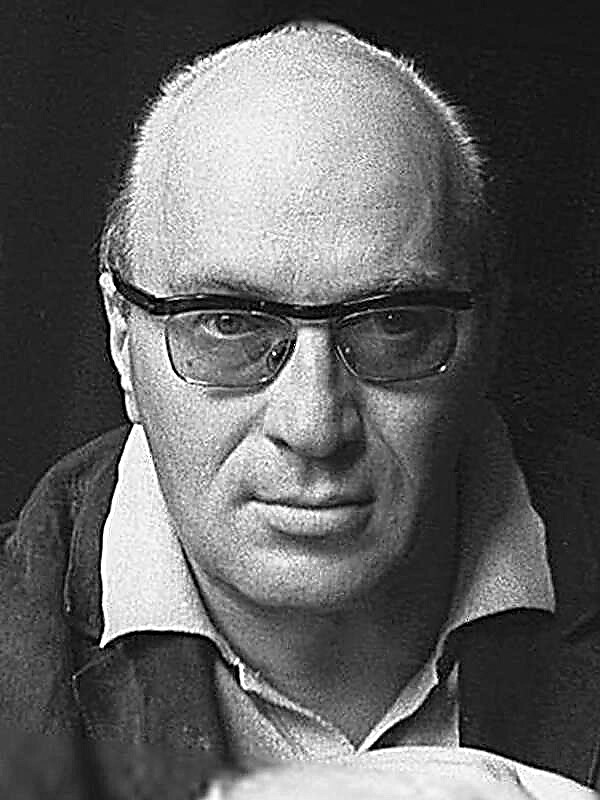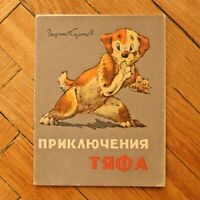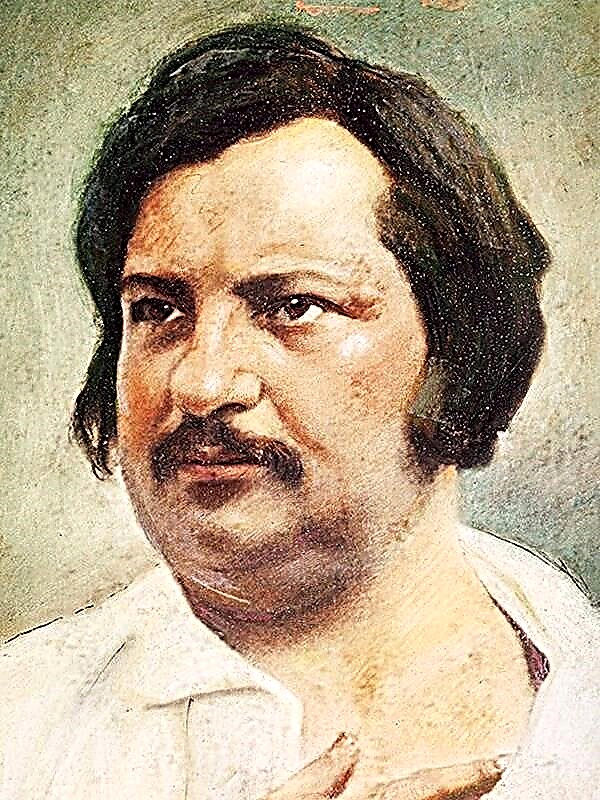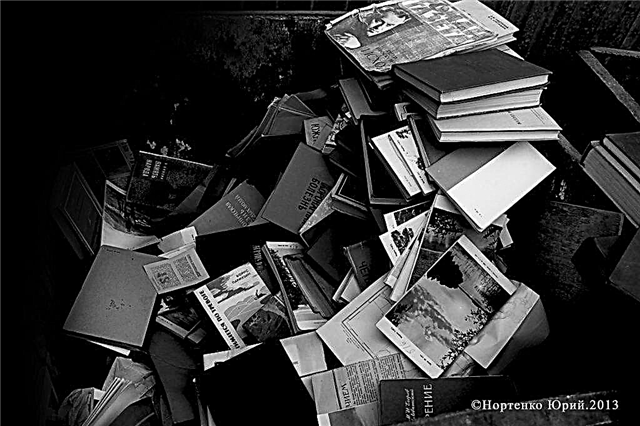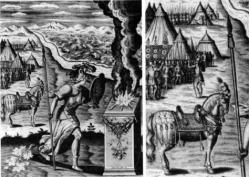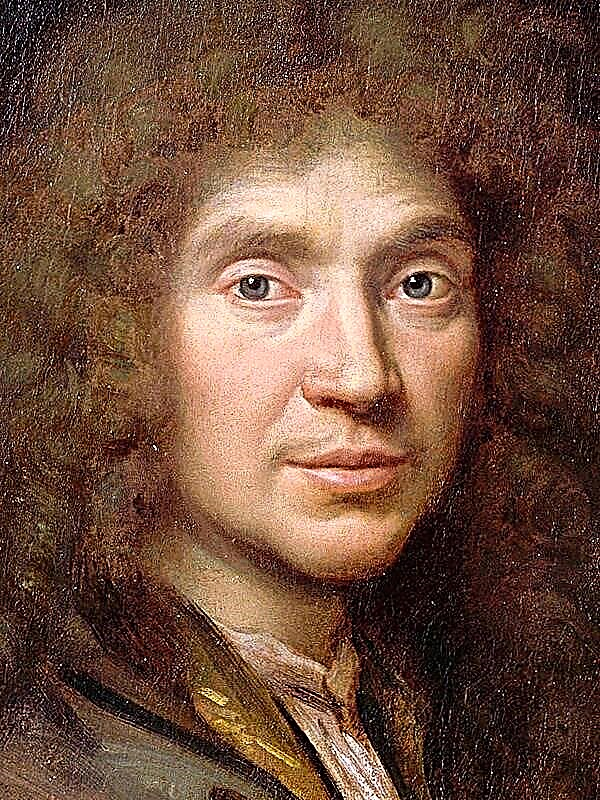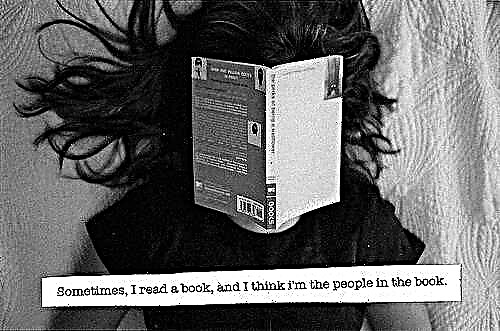Claude Lantier, an artist, hanged himself in his studio in front of an unfinished painting in November 1870. His wife Christine, posing for this painting and painfully jealous of her, lost her mind from grief. Claude lived in utter poverty. There was nothing left of him but a few sketches: the last and main picture, a failed masterpiece, tore from the wall and burned in a fit of rage, a friend of Claude Sandoz. Apart from Sandoz and Bongran - Claude's other friend, artist-master and academic rebel - there was none of their company at the funeral.
... They were all from Plassan and made friends at the college: the painter Claude, the novelist Sandoz, the architect Dubuch. In Paris, Dubuch entered the Academy with great difficulty, where he was subjected to the merciless ridicule of friends: both Claude and Sandoz dreamed of a new art, equally despising the classical patterns and the gloomy, literary romanticism of Delacroix through and through. Claude is not just phenomenally gifted - he is obsessed. Classical education is not for him: he learns to portray life as he sees it - Paris, its central market, embankments of the Seine, cafes, passers-by. Sandoz dreams of a synthesis of literature and science, of a gigantic novel series that would embrace and explain the whole history of mankind. Claude’s obsession is alien to him: he watches with fright as the periods of inspiration and hope give way to his friend's grim impotence. Claude works, forgetting about food and sleep, but does not go beyond drafts - nothing satisfies him. But the whole company of young painters and sculptors - the easy and cynical mocker Fazherol, the ambitious son of the masonry magudo, the prudent critic Zhori - are sure that Claude will become the head of the new school. Jory called her the "plein air school." The whole company, of course, is not only engaged in disputes about art: Magudo disgusts the slut-pharmacist Matilda with disgust, Fazherolles is in love with the pretty cocotte Irma Beko, who spends time with artists disinterestedly, that’s truly out of love for art.
Claude shunned women until one night, not far from his house on the Bourbon Embankment, during a thunderstorm, he met a stray young beauty - a tall girl in black who came to enter the lectrice of the rich widow of the general. Claude had no choice but to suggest that she spend the night with him, but she had no choice but to agree. Chastely placing the guest behind a screen and annoyed at a sudden adventure, in the morning Claude looks at the sleeping girl and freezes: this is the nature he dreamed about for a new picture. Forgetting everything, he begins to quickly sketch her small breasts with pink nipples, a thin arm, her black hair loose ... Waking up, she in horror tries to hide under the sheet. Claude hardly persuades her to pose further. They belatedly get acquainted: her name is Kristina, and she was barely eighteen. She trusts him: he sees in her only a model. And when she leaves, Claude annoyingly admits to himself that he will most likely never see the best of his models and that this circumstance seriously upsets him.
He made a mistake. She came in a month and a half later with a bouquet of roses - a sign of her gratitude. Claude can work with the same enthusiasm: one sketch, even if he succeeded better than all the previous ones, is not enough for his new work. He decided to portray a naked woman against the background of a spring garden, in which couples walk and wrestlers frolic. The name for the picture is already there - just “Plein Air”. In two sessions, he wrote Christina's head, but he does not dare to ask her to pose naked again. Seeing how he is tormented, trying to find a model like her, one evening she undresses in front of him, and Claude completes her masterpiece in a matter of days. The painting is intended for the Salon of the Les Miserables, conceived as a challenge to the Parisian Salon, which is official and unchanged in its preferences. A crowd is gathering around Claude’s picture, but the crowd is laughing. And no matter how much Jory assures us that this is the best advertisement, Claude is terribly depressed. Why is a woman naked and a man dressed? What kind of sharp, rough strokes? Only artists understand the originality and power of this painting. In a feverish excitement, Claude screams about contempt for the public, that together with his comrades he will conquer Paris, but he returns home in despair. A new shock awaits him here: the key is stuck in the door, some girl has been waiting for him for two hours ... This is Kristina, she was at the exhibition and saw everything: a picture in which she recognizes herself with horror and admiration, and the audience from dumbasses and scoffers. She came to console and encourage Claude, who, having fallen at her feet, no longer restrains sobs.
... This is their first night, followed by months of intoxication. They rediscover each other. Christine leaves her generals, Claude searches for a house in Bennecourt, a suburb of Paris, for only two hundred and fifty francs a year. Not having married Christina, Claude calls her wife, and soon his inexperienced lover discovers that she is pregnant. The boy was named Jacques. After his birth, Claude returned to painting, but Bennecourt's landscapes already bored him: he dreams of Paris. Kristina understands that burying herself in Bennekur is unbearable for him: the three of them return to the city.
Claude visits old friends: Magudo is inferior to the tastes of the public, but still retains talent and strength, the pharmacist is still with him and has become even uglier; Jory earns not so much criticism as a secular chronicle and is quite pleased with himself; Fazherol, stealing the paintings of Claude with might and main, and Irma, weekly changing lovers, from time to time throw themselves at each other, because there is nothing stronger than the affection of two egoists and cynics. Bon-gran, Claude’s eldest friend, a recognized master who rebelled against the Academy, for several months in a row cannot get out of a deep crisis, doesn’t see new ways, talks about the painful fear of the artist before the realization of each new plan, and in his depression Claude sees with horror an omen own torment. Sandoz got married, but still receives friends on Thursdays. Gathered in the same circle - Claude, Dubuch, Fazherol, Sandoz with his wife Henrietta - the friends sadly notice that they are arguing without the same fervor and are talking more about themselves. The connection was broken, Claude goes into a lonely job: it seems to him that now he is really able to exhibit a masterpiece. But for three years in a row, the Salon rejects its best, innovative, striking creations: a winter landscape of the city outskirts, Batignolles Square in May and a sunny, as if melting view of Carousel Square in the middle of summer. Friends are delighted with these paintings, but the sharp, roughly accented painting scares off the jury of the Salon. Claude is again afraid of his inferiority, hates himself, his insecurity is transferred to Christine. Only a few months later he was presented with a new plan - a view of the Seine with port workers and bathers. Claude takes up a gigantic sketch, quickly writes down the canvas, but then, as always, in a fit of uncertainty, spoils his own work, can’t bring anything to the end, ruins the plan. His hereditary neurosis is expressed not only in genius, but also in the inability to be realized. Every finished work is a compromise; Claude is obsessed with a mania of perfection, creating something more alive than life itself. This struggle leads him to despair: he belongs to the type of geniuses for whom any concession, any retreat is unbearable. His work is becoming more and more convulsive, inspiration goes faster: happy at the moment of the birth of the plan, Claude, like any true artist, understands all the imperfection and half-heartedness of any incarnations. Creativity becomes his torture.
Then she and Kristina, tired of the neighboring gossip, finally decide to get married, but the marriage does not bring joy: Claude is absorbed in work, Kristina is jealous: having become husband and wife, they realized that the old passion had died. In addition, the son annoys Claude with his prohibitively large head and slow development: neither mother nor father yet know that Jacques has a dropsy of the brain. Poverty comes, Claude proceeds to his last and most grandiose picture - again a naked woman, the personification of Paris at night, the goddess of beauty and vice against the backdrop of a sparkling city. On the day when, in the twilight evening light, he sees his newly completed picture and again makes sure that he was defeated, twelve-year-old Jacques dies. Claude immediately begins to write "Dead Child", and Fazherol, feeling guilty before a tattered senior comrade, with great difficulty puts the picture in the Salon. There, hung out in the most distant hall, high, almost invisible to the public, she looked scary and pathetic. Bongran’s new work, Village Funeral, written as a pair for his early Village Wedding, was also not seen by anyone. But a fazherol has been a huge success, mitigating finds from Claude's early works and passing them off as his own; Fazherol, who became the star of the Salon. Sandoz looks longingly at the friends gathered at the Salon. During this time, Dubyush favorably and unhappily married, Magudo made his ugly pharmacist and became completely dependent on her, Jory sold out, Claude was awarded the nickname of a madman - is all life coming to such an inglorious end?
But the end of Claude was worse than friends could have imagined. During one of the painful and already meaningless sessions, when Claude painted the nude Christina again and again, she could not stand it. Terribly jealous of the woman on the canvas, she rushed to Claude, begging for the first time in many years to look at her again as a woman. She is still beautiful, he is still strong. On this night they experience such a passion that they did not even know in their youth. But while Christina is sleeping, Claude rises and slowly goes to the studio, to his picture. In the morning, Christina sees him hanging on a crossbar, which he himself had once nailed to strengthen a staircase.
... The air of the era is poisoned, says Bongran Sandozu at the funeral of a genius from whom nothing remains. We are all mistaken people, and the end of the century is to blame for everything with its rot, decay, dead ends on all paths. Art is in decline, around anarchy, personality is suppressed, and the century, which began with clarity and rationalism, ends with a new wave of obscurantism. If it were not for the fear of death, every true artist would have to act like Claude. But here, in the cemetery, among the old coffins and dug up land, Bongran and Sandoz remember that they will have work at home - their eternal, only torture.

